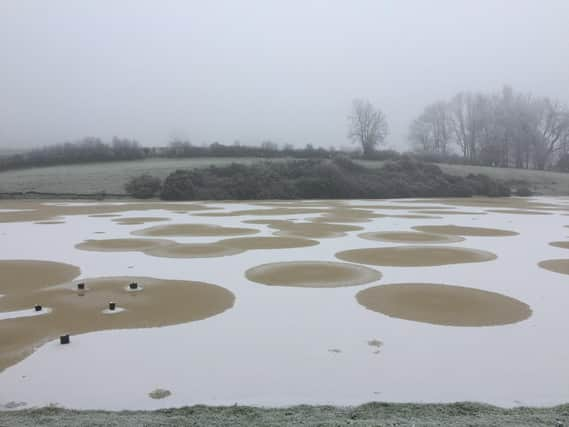They are not made by aliens from outer space or hot air whirlwinds - ice circles on a Banburyshire lake have a natural explanation


Banbury Guardian reader David Lamb of Ratley contacted the paper after seeing Diana Spitzley's photograph on the Big Picture feature in last Thursday's edition.
He propounded his theory of the mystery circles and, rather than being aliens from outer space, or hot-air whirlwinds, Mr Lamb had a much more natural explanation.
Advertisement
Hide AdAdvertisement
Hide Ad"One of your readers asked about melted circles in a lake near Brailes. I have a theory about this," he said.
"When I was a child, nearly 50 years ago, my dad built a lake between Sibford and Hook Norton - to encourage wildlife. One particularly hard winter, the lake froze to such a depth that it was perfectly safe to walk on. There were however circles, I think about two to three feet across, that were quite thin.
"My dad correctly worked out that these circles were where methane gas, from rotting vegetation at the bottom of the lake, which collected in pockets in the ice. To prove this he used a hypodermic needle - he was a farmer so injected animals regularly. He stuck it into the thinnest part of the ice and lit the escaping methane with spectacular results involving the loss of eyebrows.
"I think that gas pockets have formed under the ice in the lake in Brailes. Being the thinnest areas of ice, they have melted first. Once a circular hole has formed, the water melts the ice around the hole, making bigger circles in the ice. Not sure if this is correct but I think it is possible."
Advertisement
Hide AdAdvertisement
Hide Ad* Methane is produced by the breakdown or decay of organic material and can be introduced into the atmosphere by either natural processes – such as the decay of plant material in wetlands, the seepage of gas from underground deposits or the digestion of food by cattle - or human activities such as oil and gas production, rice farming or waste management.